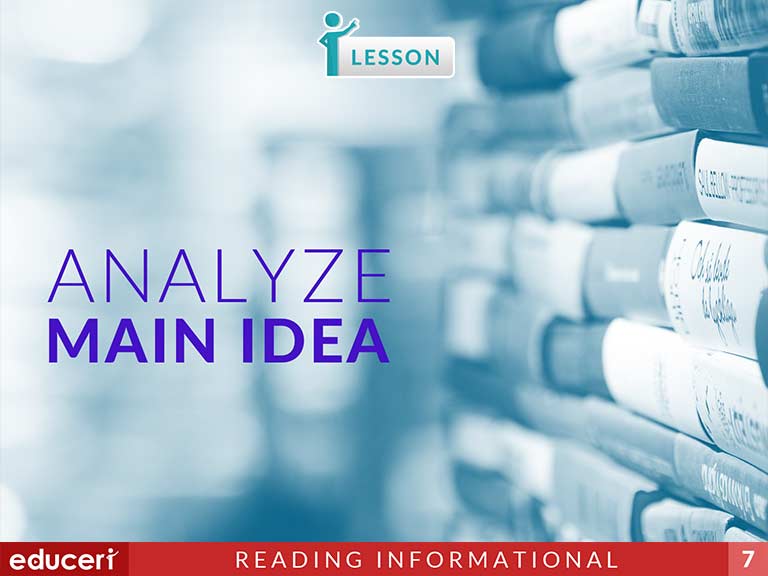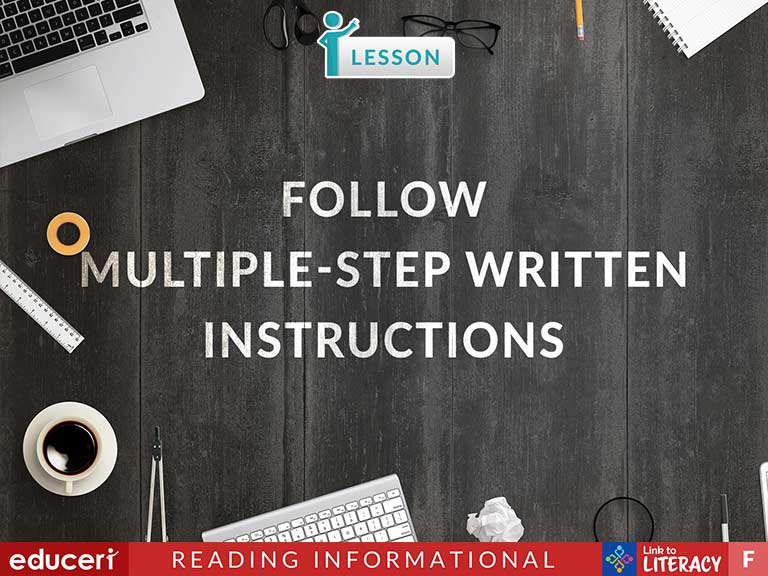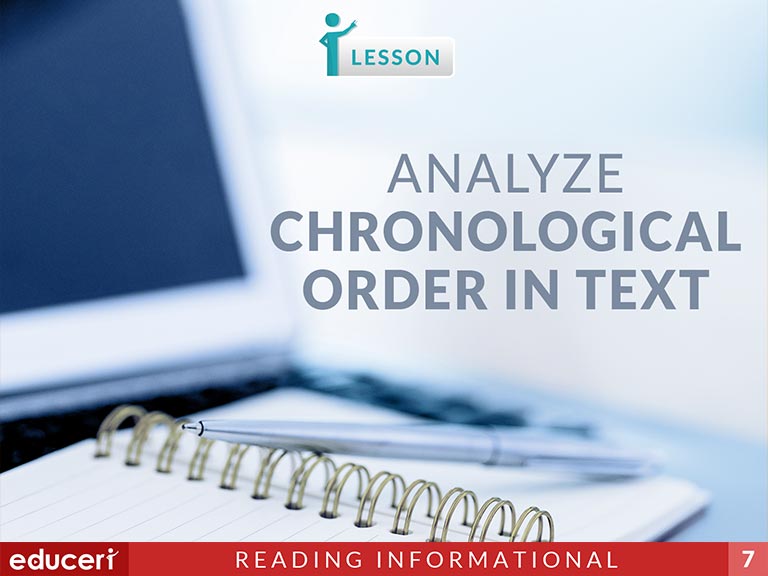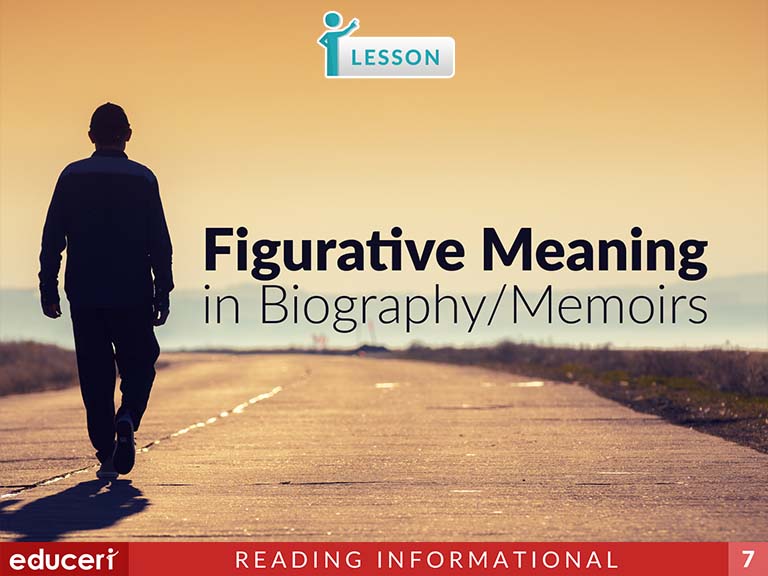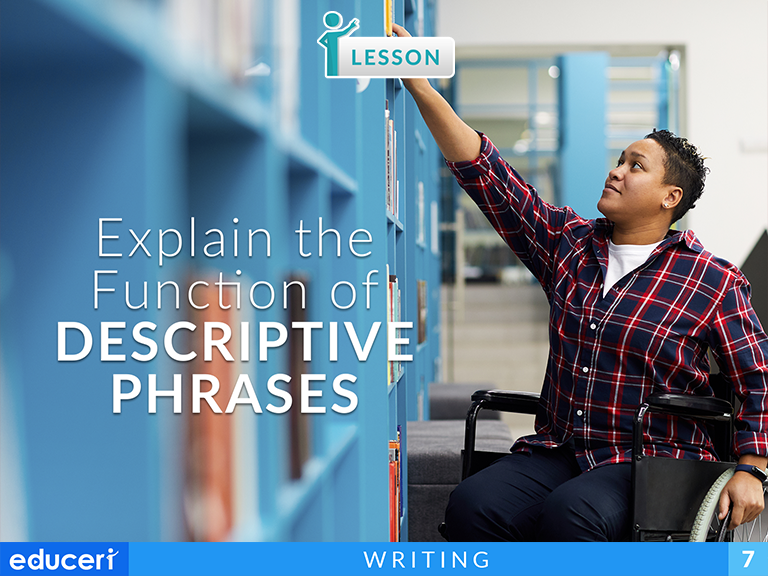All Lessons
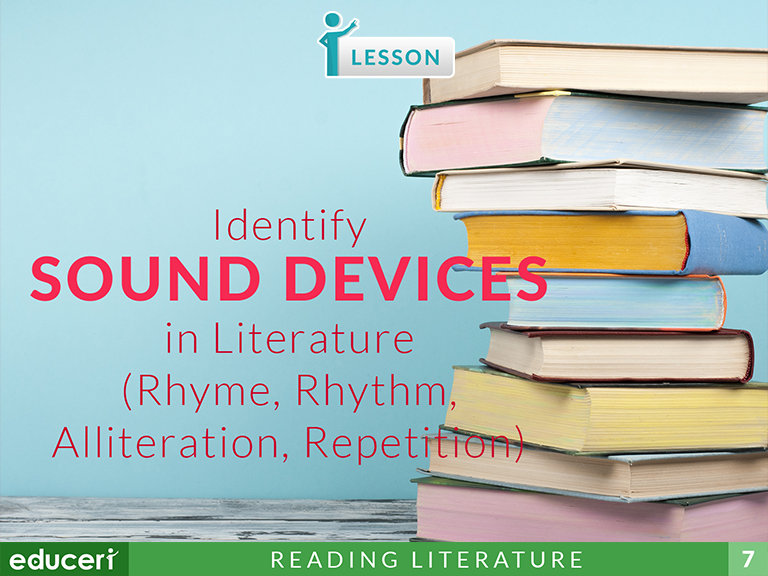
Identify and Use Sound Devices (Rhythm, Rhyme, Alliteration, Repetition)
This reading literature lesson covers how to identify and use sound devices in a literary text. These include rhyme, rhythm, alliteration, and repetition. The lesson includes research-based strategies and strategic questions that prepare students for assessments. In this lesson, students identify the sound device used and then use it themselves in a sentence. Both poems and speeches are used as examples.
Share This Lesson
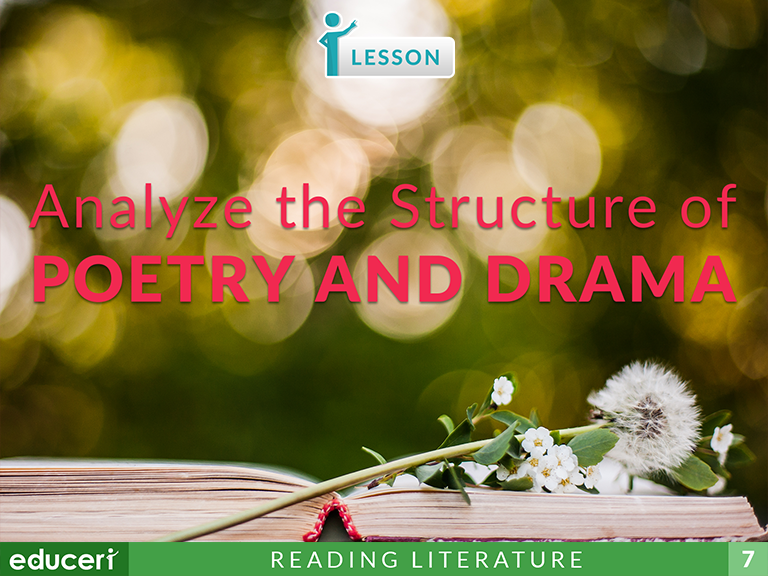
Analyze the Structure of Poetry and Drama
This literary response and analysis lesson focuses on identifying the characteristics of poetry and drama. The lesson includes research-based strategies and strategic questions that prepare students for assessments. In this lesson, students read the passage, noting any characteristics of poetry or drama (based on a given table). Then, they determine if the text is poetry or drama and explain their answer by listing all the characteristics they found. In addition to the lesson, there are eight pages of Independent Practice and review with questions modeled after current adaptive testing items.
Share This Lesson
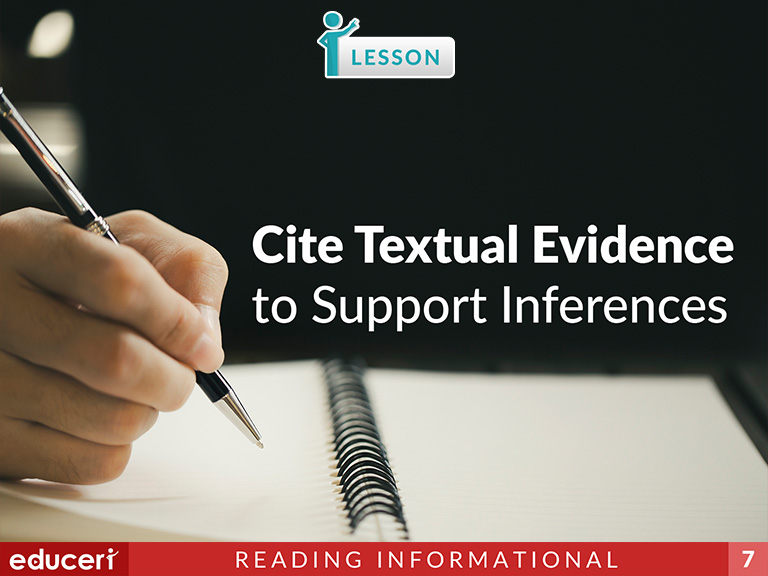
Cite Textual Evidence to Support Inferences
This reading informational text lesson covers how to cite textual evidence to support inferences. The lesson includes research-based strategies and strategic questions that prepare students for assessments. In this lesson, students will read the informational text and identify phrases that support a given inference.
Share This Lesson
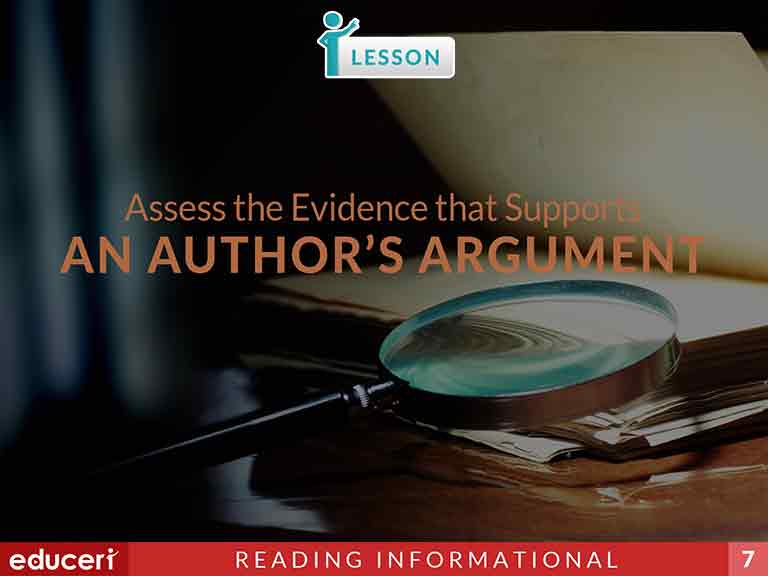
Assess the Evidence that Supports an Author's Argument
This reading informational text lesson covers how to assess the evidence that supports an author’s argument in informational text. The lesson includes research-based strategies and strategic questions that prepare students for assessments. In this lesson, students identify whether the evidence is accurate, appropriate, or adequate.
Share This Lesson
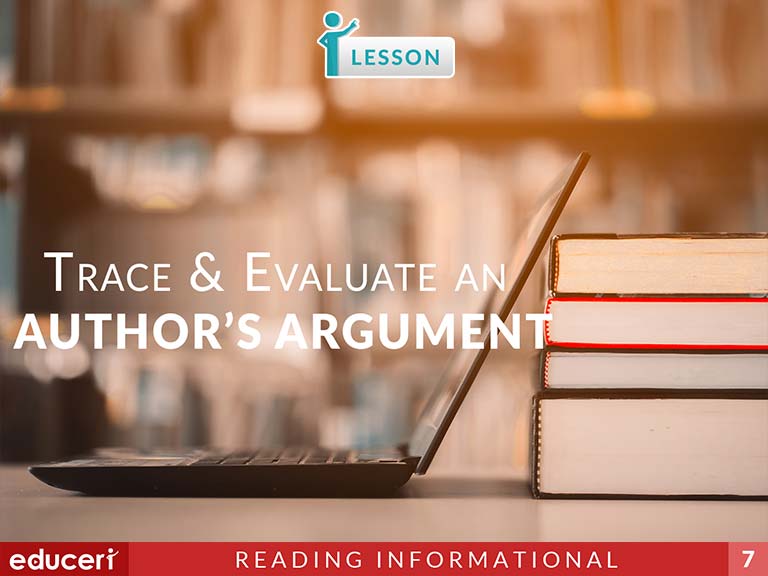
Trace & Evaluate an Author's Argument
This reading informational text lesson covers how to trace and evaluate an author’s argument in informational text. The lesson includes research-based strategies and strategic questions that prepare students for assessments. In this lesson, students identify the author’s claims and determine if each claim is supported by relevant evidence. A final judgment is made on whether the argument has sound reasoning.
Share This Lesson
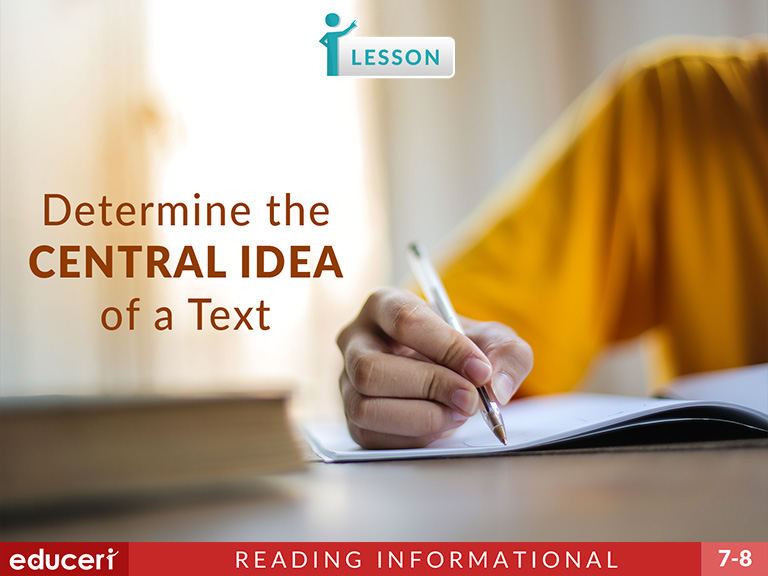
Determine the Central Idea of a Text
This reading informational text lesson covers determining a central idea in the text. The lesson includes research-based strategies and strategic questions that prepare students for assessments. In this lesson, students will practice identifying central ideas in expository text, and analyze its development over the course of the text, including its relationship to supporting ideas.
Share This Lesson

Identify the Author's Point of View
This reading comprehension lesson focuses on identifying an authors point of view. The lesson includes research-based strategies and strategic questions that prepare students for assessments. In this lesson, students read the passage to determine the author's point of view. Then, they go back to the text to identify supporting details that help develop the author's point of view. In addition to the lesson, there are four pages of Independent Practice and review with questions modeled after current adaptive testing items.
Share This Lesson
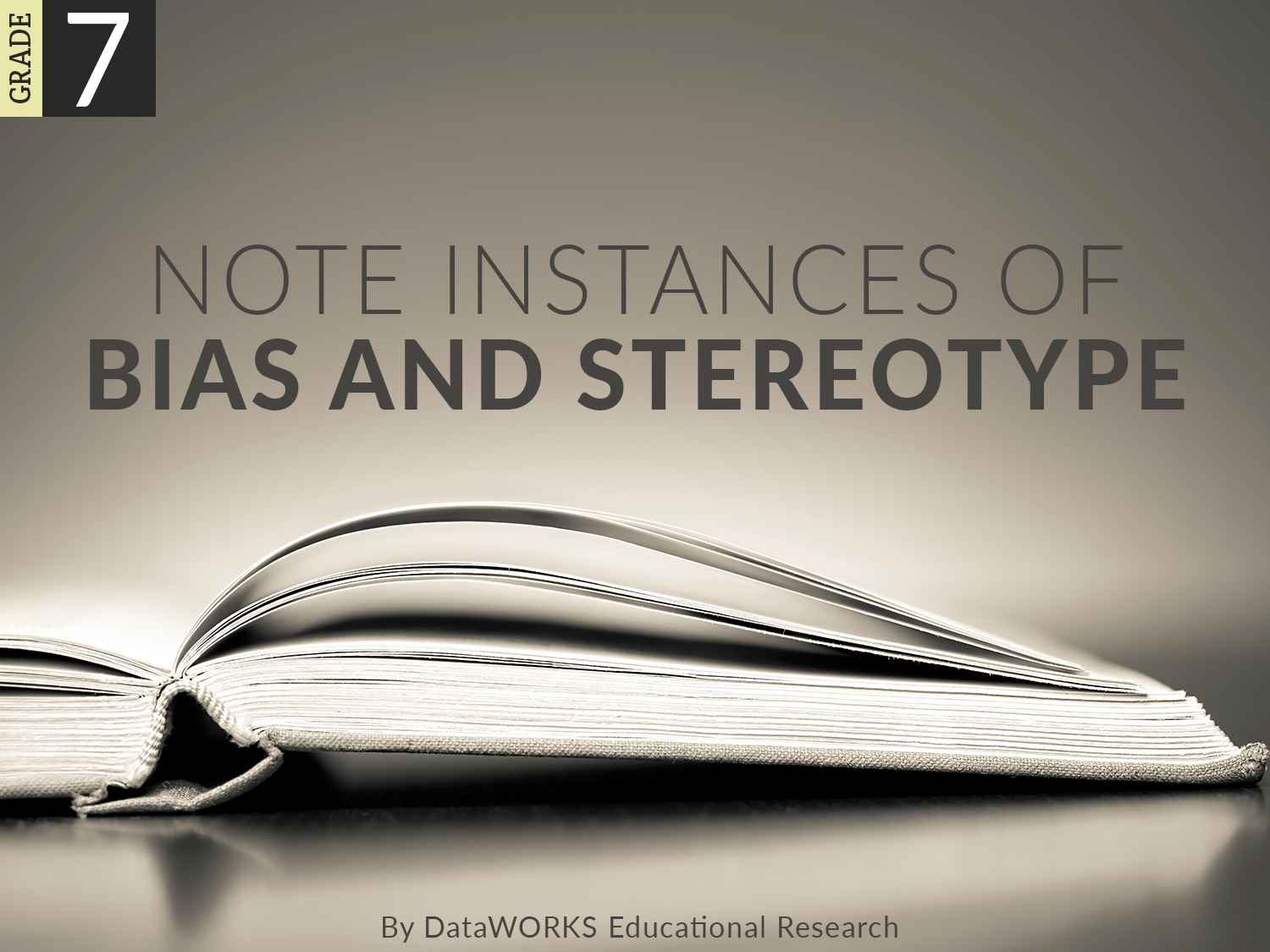
Note Instances of Bias and Stereotyping
This reading comprehension lesson focuses on noting instances of bias and stereotype. The lesson includes research-based strategies and strategic questions that prepare students for assessments. In this lesson, students read a passage to identify the author's assertion. Then, they answer questions about examples of bias or stereotyping found within the text. In addition to the lesson, there are four pages of Independent Practice and review with questions modeled after current adaptive testing items.
Share This Lesson
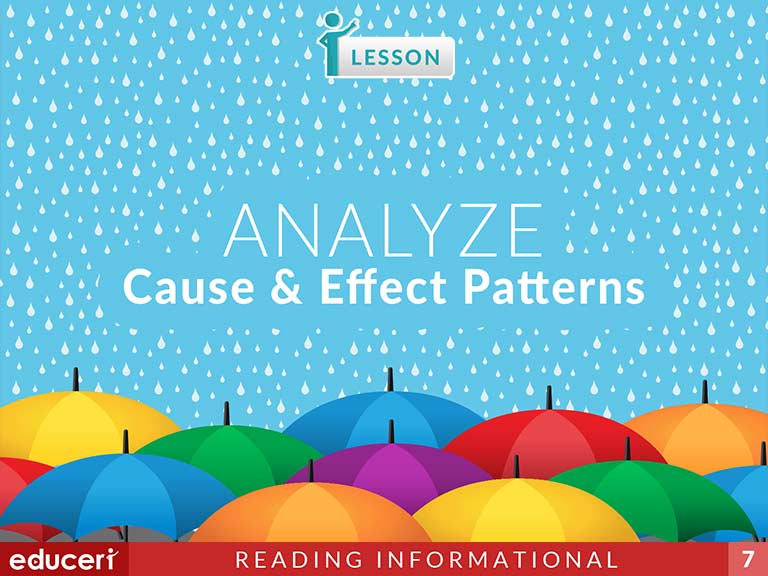
Analyze Cause-and-Effect Text
This reading comprehension lesson focuses on analyzing text that uses the cause-and-effect organizational pattern. The lesson includes research-based strategies and strategic questions that prepare students for assessments. In this lesson, students read the text and identify signal words that indicate cause-and-effect relationships. Then they determine the cause and the effect. Finally, they identify the pattern -- single cause with single effect or multiple effects, or multiple causes with a single effect. In addition to the lesson, there are seven pages of Independent Practice and review with questions modeled after current adaptive testing items.
Share This Lesson
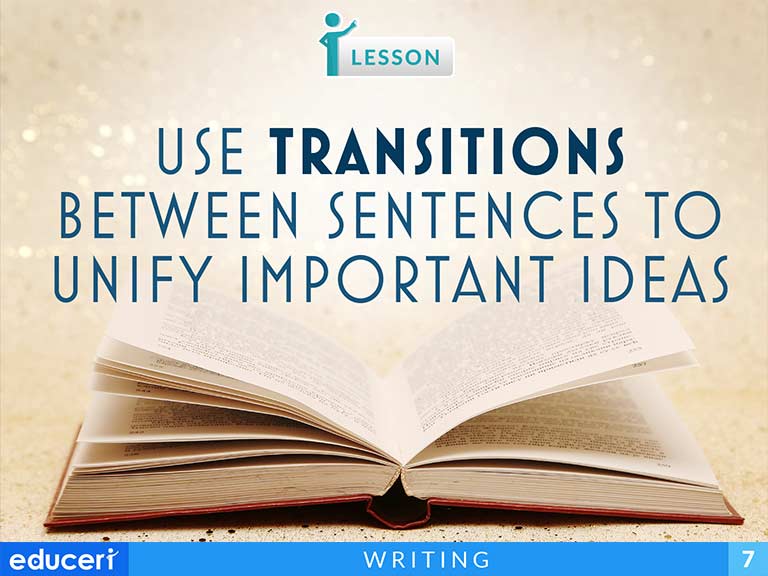
Use Transitions between Sentences to Unify Important Ideas
W.7.2 Write informative/explanatory texts to examine a topic and convey ideas, concepts, and information through the selection, organization, and analysis of relevant content.
W.7.2.CW.7.2.C Use appropriate transitions to create cohesion and clarify the relationships among ideas and concepts.
This writing strategies lesson focuses on using transitions between sentences to unify important ideas. The lesson includes research-based strategies and strategic questions that prepare students for assessments. In this lesson, students read a paragraph and identify comparing and contrasting, cause and effect, add or sequence ideas within the sentence or paragraph. Using the transition table (word bank), students select the appropriate transition to place between sentences. In addition to the lesson, there are four pages of Independent Practice and review with questions modeled after current adaptive testing items.
Share This Lesson
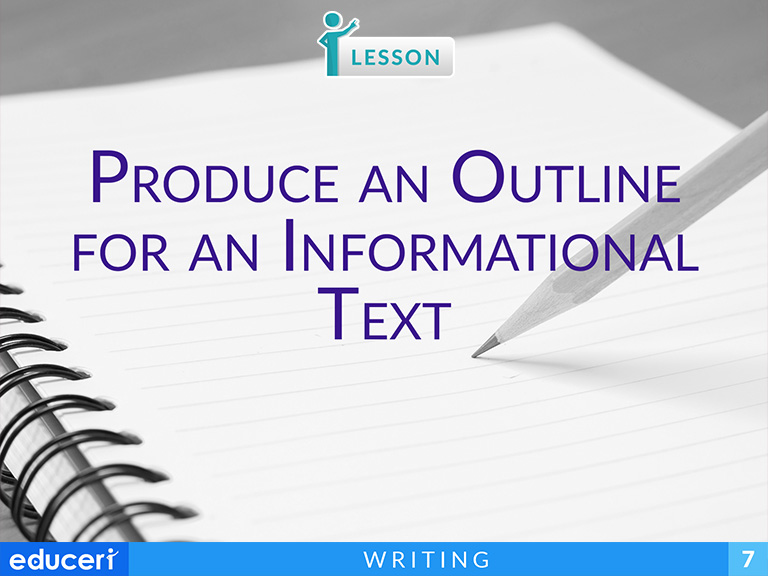
Use Outlining to Analyze a Composition
This writing strategies lesson focuses on clarifying text by creating outlines. The lesson includes research-based strategies and strategic questions that prepare students for assessments. In this lesson, students read a passage and fill out a corresponding outline. They identify the missing main topic, subtopics, and details and fill them into the correct places on the outline. Eventually, the student will fill in an entire empty outline. In addition to the lesson, there are four pages of Independent Practice and review with questions modeled after current adaptive testing items.
Share This Lesson
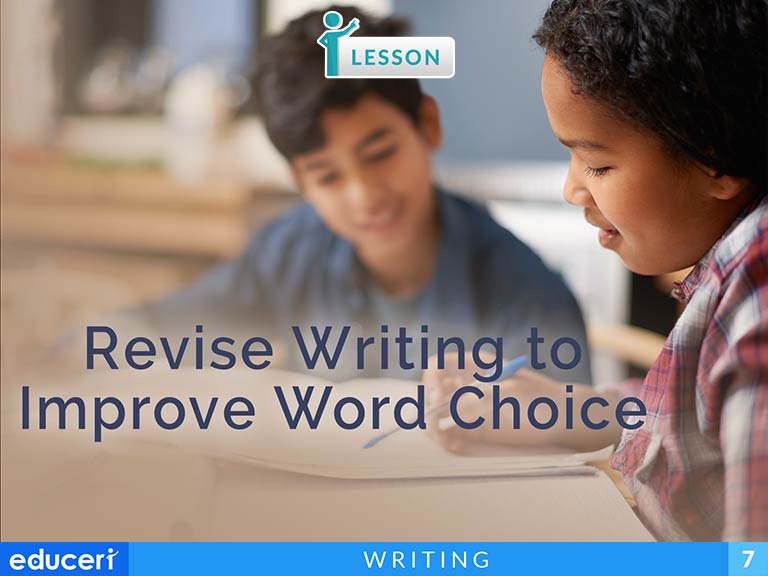
Revise Writing to Improve Word Choice
This writing strategies lesson focuses on revising writing to improve word choice. The lesson includes research-based strategies and strategic questions that prepare students for assessments. In this lesson, students read the question and paragraph, looking for the words to be revised. Then, students replace the word with a more precise word from the word bank and re-read the sentence in the paragraph with the new, more precise word. In addition to the lesson, there are four pages of Independent Practice and review with questions modeled after current adaptive testing items.
Share This Lesson
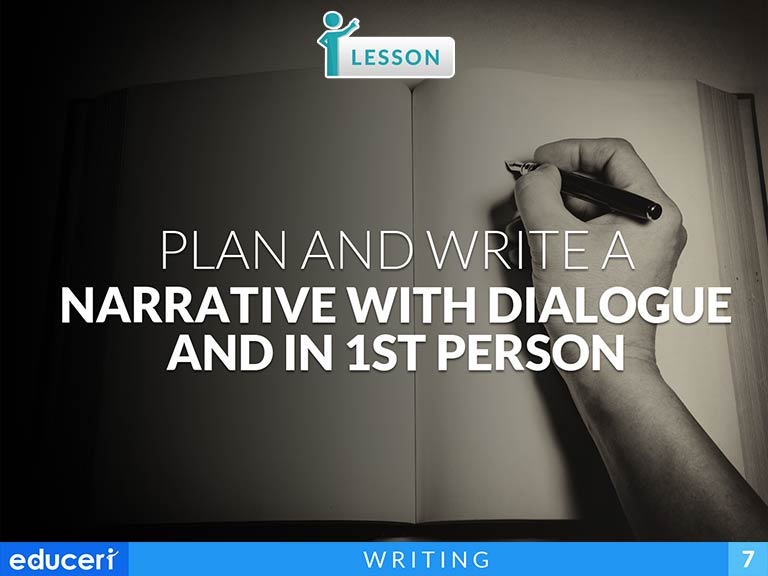
Plan and Write a Narrative with Dialogue and in First Person
This writing strategies lesson focuses on writing a multi-paragraph narrative composition. The lesson includes research-based strategies and strategic questions that prepare students for assessments. In this lesson, students create a graphic organizer that describes the introduction, the body, and the conclusion of their composition based on a given prompt. Then, they use the organizer to write a four-paragraph composition. In addition to the lesson, there are eleven pages of Independent Practice and review with prompts and organizers provided.
Share This Lesson
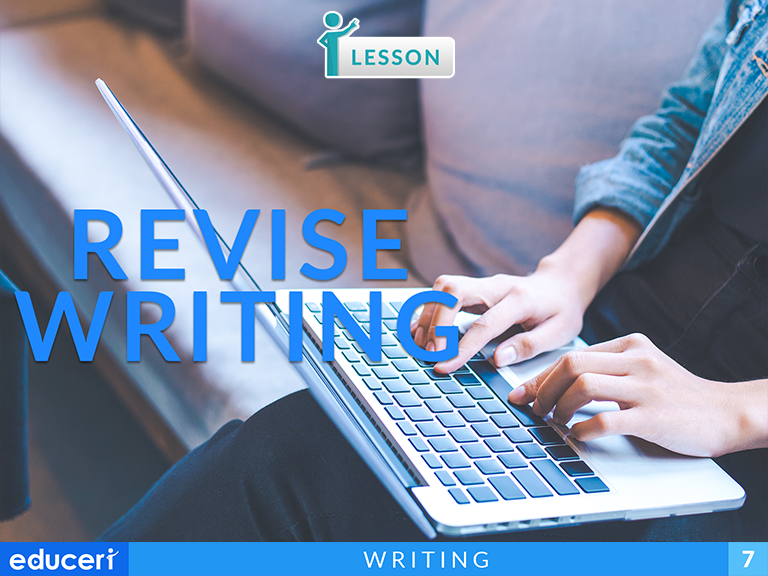
Revise Writing
This writing lesson covers how to revise writing by adding or deleting sentences based on how they support the main idea. The lesson includes research-based strategies and strategic questions that prepare students for assessments. In this lesson, students will learn how to change written text to improve it by determining which details support the main idea and which don’t.

